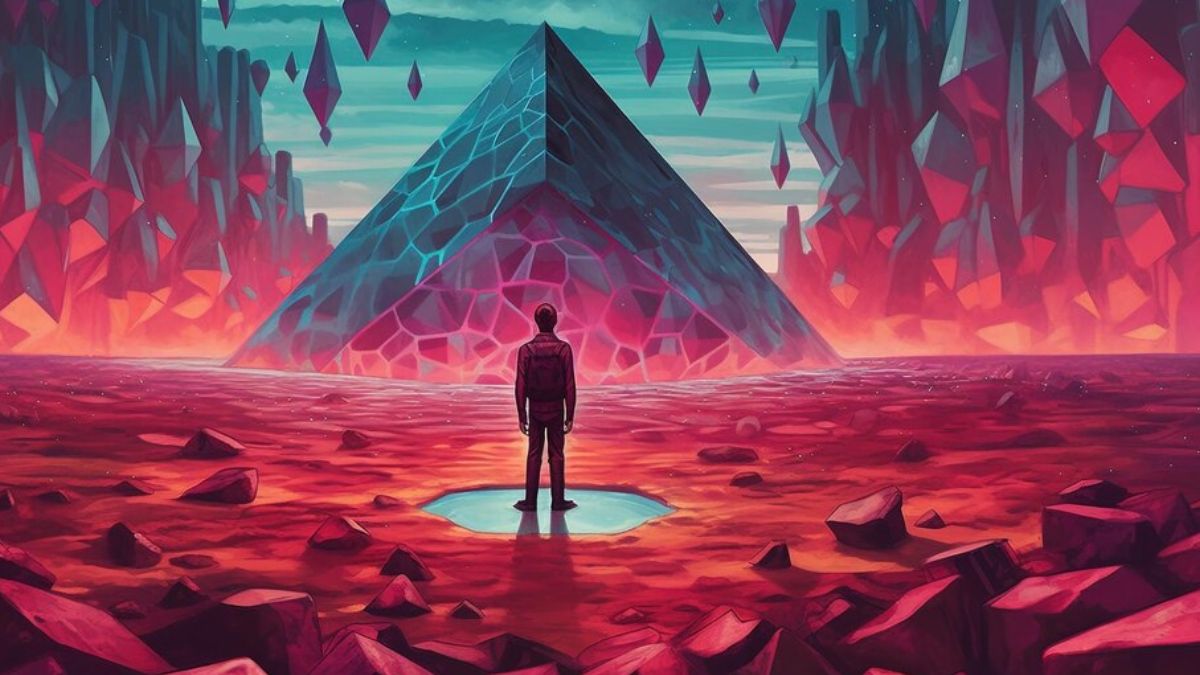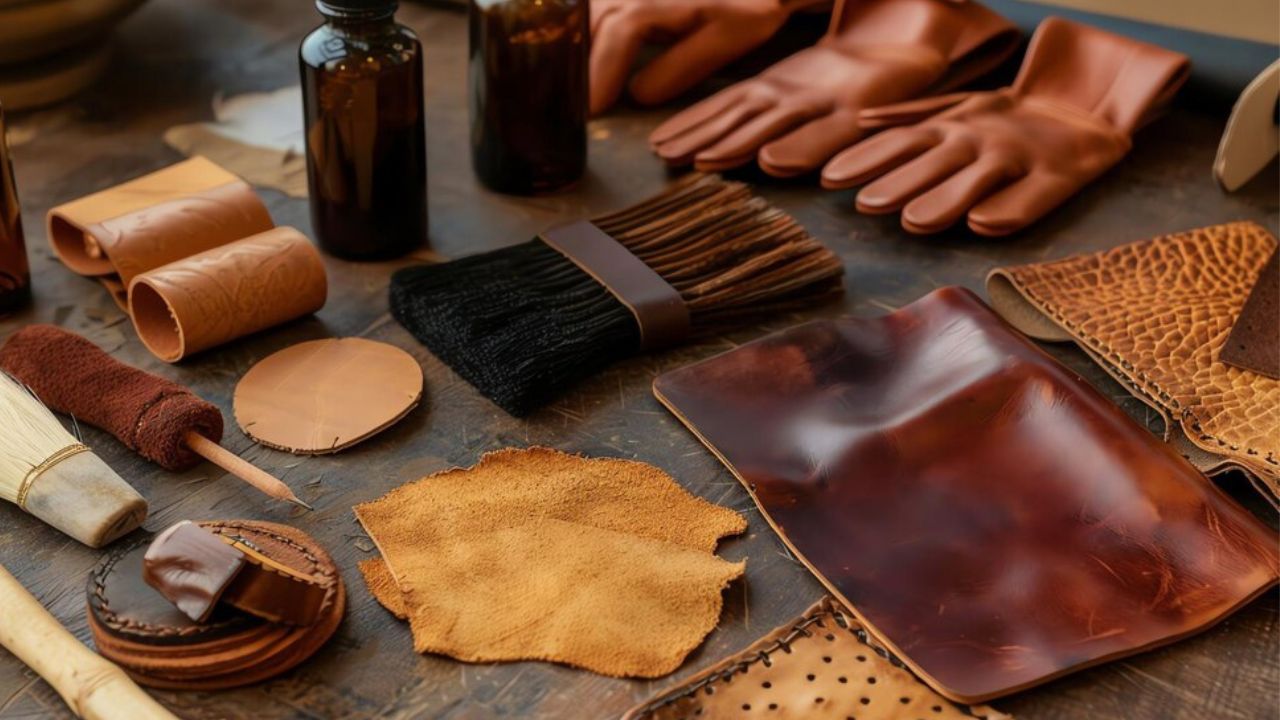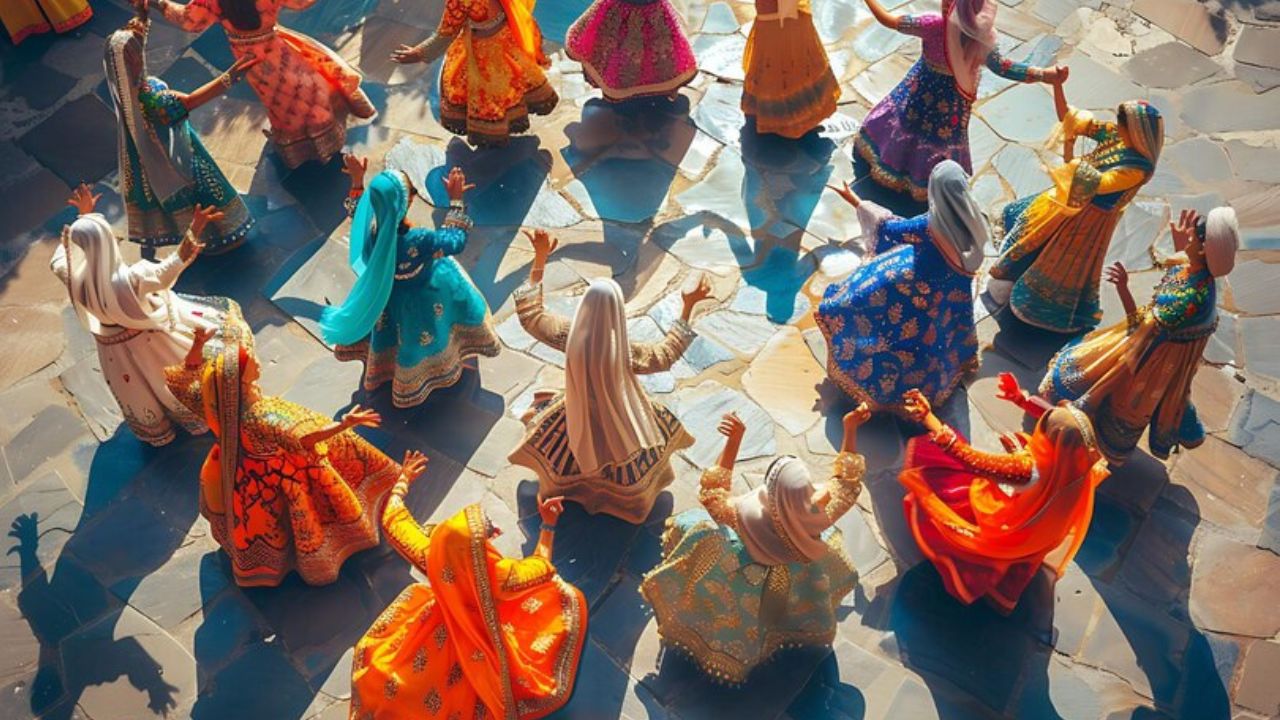More
Triangle of Sadness Review: A Satirical Exploration of Wealth and Power

Triangle of Sadness Review has generated a lot of excitement in the industry, with many people looking forward to its scathing indictment of modern lifeRuben Östlund directs this film, which explores the absurdities of riches, power, and human conduct, promising a sad critique mixed with dark Let’s examine what makes this movie a significant contribution to contemporary satire.
Plot Summary
To put it mildly, “Triangle of Sadness Review” explores the flimsy and frequently absurd nature of societal structures through the tragically mishandled luxury yacht vacation plot. The movie delves into the lives of various characters, encompassing both the extremely wealthy travelers and the diligent staff. It illustrates how their relationships evolve when confronted with unforeseen hardship. The story is provocative, with themes of privilege, vanity, and survival at its core.
Characters and Performances
The ensemble cast of the movie is diverse and gives strong performances. The main pair, Carl and Yaya, are portrayed by Harris Dickinson and Charlbi Dean. Throughout the trip, their relationship is put to the test. Woody Harrelson excels as the dejected and frequently inebriated captain, offering both comic relief and important perspective on the power dynamics on board. The supporting cast, including the ship’s crew and the affluent oligarchs, adds complexity and richness, preventing any character from becoming flat.
Direction and Cinematography
The direction of Ruben Östlund is precise and incisive, perfectly depicting the tumultuous fusion of luxury and catastrophe. The photography is remarkable; it employs close-ups to depict the protagonists’ strong emotional experiences and wide views to highlight the yacht’s isolation.The visual style highlights the wealth and absurdity of the elite’s world, complementing the satirical tone of the screenplay and dialogue.A notable component of the movie is the writing, which is full with sharp, funny dialogue that fuels its satirical edge. Stlund’s prose possesses a sharp and hilarious sense, leaving you thinking about his phrases long after the credits have rolled. Tensive dinner talks and the pandemonium that develops when the yacht’s journey goes astray are among the memorable episodes; each one is rich with commentary and meaning.
Themes and Symbolism
“Triangle of Sadness” primarily examines the gap between the rich and the rest of society.The movie examines larger social processes through the microcosm of the boat, criticizing the moral degeneration and superficiality that often accompany extreme wealth. The title “Triangle of Sadness,” referencing the term used by the cosmetics industry to describe forehead creases, and the characters’ decline in perspective, are rich examples of symbolism throughout.
Humor and Satire
“Triangle of Sadness” contains dark, acerbic, and perfectly timed humor. Östlund uses humor to highlight the absurdity and disconnection from reality of the super-rich. The humorous scenes in the movie frequently emerge from devastating circumstances if they weren’t so ridiculous, making audiences laugh and cringe at the same time.
Pacing and Structure
The film’s slow tempo lets audiences take in all of the drama and humor as it develops. Although it may seem a bit slow at times, the pacing works to create tension and fully flesh out the character journeys.The unusual structure and focus changes keep the tale interesting and unpredictable.
Soundtrack and Score
The tone of the movie is subtly but significantly established by the audio and scoreThe score supports the chaos and suspense, while the musical selections mirror the protagonists’ ostentatious and manufactured lifestyles. The filmmakers have thoughtfully chosen this mixture to enhance the overall viewing experience.
Comparisons to Other Works
Audience and Critical Reception
The film’s dark humor and ponderous pacing have elicited mixed reactions from general viewers, yet many value its daring approach on social issues. Its crisp writing, powerful performances, and daring direction by Östlund have garnered it much of the accolades from critics. It has become a major cultural touchstone by igniting discussions on the obligations and excesses of the wealthy.
Box Office Performance
“Triangle of Sadness” has had a mediocre amount of box office success because to its positive reviews from critics and festival hype. Though its appeal may be specialized, it has done well with viewers looking for challenging films.
Cultural Impact and Legacy
The movie has had a lasting influence, particularly in conversations on social responsibility and wealth inequality. Its iconic scenes and incisive sarcasm guarantee that it will be brought up in later studies of modern film. In light of contemporary excess, “Triangle of Sadness Review” is a potent remark on the state of humanity.
Personal Impressions and Recommendations
In my opinion, “Triangle of Sadness” is a sharp and engrossing work of cinematography. It stands out among contemporary satire because of its ability to combine fun with sobering criticism. I suggest it to viewers who enjoy movies that question conventional wisdom and elicit serious contemplation, but it might not be appropriate for those looking for lighthearted enjoyment.
Conclusion
” Triangle of Sadness” is a brilliant examination of the ridiculousness of riches and power, encased in a sly and macabre wrapper. With a picture that is both thought-provoking and amusing, Ruben Östlund has created something that will stick with spectators. This is a must-watch if you’re in the mood for a movie that makes you think, laugh, and maybe even feel a bit uneasy.
FAQs
Q1: Is “Triangle of Sadness” based on a true story?
No, even though it incorporates themes from actual life and insights about society, the movie is a work of fiction.
Q2: How does the film compare to Ruben Östlund’s other works?
Like his earlier works, “Triangle of Sadness” is a dark comedy that deftly critiques society, carrying on Östlund’s investigation of human nature and conventions.
Q3: Is the film suitable for all audiences?
Q4: What does the title “Triangle of Sadness” refer to?
The title alludes to a word used in the cosmetics industry to describe the furrowed brow wrinkles, signifying the petty worries of the movie’s protagonists.
Q5: Where can I watch “Triangle of Sadness”?
The movie is accessible on a number of streaming services and in a few cinemas. For availability, check your local listings or streaming providers.

More
The Ultimate Vegan Leather Guide: Everything You Need to Know

In the worlds of sustainability and fashion,The Ultimate Vegan Leather Guide has gained popularity, but what does it really mean? This article will lead you through all you need to know about vegan leather, whether you are a conscientious customer or just interested in learning more about this popular material.
What is Vegan Leather?
The Ultimate Vegan Leather Guide designers create a synthetic material that mimics the texture and appearance of real animal leather. It consists of multiple materials, making it a suitable alternative for people with ethical concerns about animal products..
Types of Vegan Leather
Manufacturers produce vegan leather in various forms using different ingredients and techniques.
Polyurethane (PU) Leather:
One of the most popular kinds of vegan leather is polyurethane leather, sometimes known as PU leather. Manufacturers create it by applying a polyurethane coating to a fabric substrate and then processing it to mimic the texture of real leather.
PVC Leather:
Another common choice is PVC leather, often known as polyvinyl chloride leather. While it is comparable to PU leather, it is typically less flexible and breathable. Nonetheless, it is waterproof and incredibly robust.
Plant-Based Vegan Leather:
As consumers look for more environmentally friendly materials, plant-based choices are becoming more and more popular. Apple peels, mushrooms, and pineapple leaves (Piñatex) can all be used to make leather.
Recycled Plastic Leather:
Some vegan leathers use recycled plastics, offering a more environmentally responsible option compared to virgin synthetic materials. This lessens the impact on the environment while also reducing trash.
Why Choose Vegan Leather?
There are various advantages of selecting vegan leather:
Ethical Considerations:
Vegan leather is produced without inflicting any cruelty on animals. Because of this, people who value animal welfare choose it.
Environmental Impact:
Although the sustainability of vegan leather varies, many plant-based and recycled choices have a smaller environmental impact than regular leather production.
Versatility and Innovation:
Vegan leather comes in a wide range of textures, hues, and finishes, making it incredibly adaptable. Designers are now free to try out novel concepts and styles thanks to this invention.
How to Care for Vegan Leather
Although it is not too difficult, vegan leather does need some attention to detail.
Cleaning:
Vegan leather should always be cleaned with a moist cloth and light soap. Steer clear of harsh chemicals as they may harm the material.
Storage:
Products made of vegan leather should be kept dry and cool. Steer clear of direct sunlight since it can eventually cause fading or cracking.
Avoid Overloading:
Steer clear of overloading vegan leather shoes or purses. Overweight loads may cause the material to rip or stretch.
Is Vegan Leather Truly Sustainable?
The ingredients and methods used in the creation of vegan leather determine its sustainability. Recycled and plant-based materials usually have a smaller environmental impact, but synthetic leathers like PU and PVC can significantly harm the environment if manufacturers do not produce them ethically.
Conclusion
Compared to typical leather, vegan leather is frequently more sustainable and cruelty-free. Vegan leather offers options for everyone, whether you are searching for a chic accessory or a morally conscious clothing option. You can make an informed choice that is consistent with your values if you are aware of the many kinds, advantages, and maintenance advice.
FAQs
Is vegan leather waterproof?
While certain vegan leather varieties, like PVC, are waterproof, others might only be water-resistant. Prior to subjecting a material to moisture, it is imperative to inspect its qualities.
How long does vegan leather last?
The longevity of vegan leather is contingent upon its quality and level of maintenance. With the right care, vegan leather of superior quality can endure for several years.
Is vegan leather biodegradable?
Vegan leather made from plants degrades more naturally than leather made from synthetic materials.Unfortunately, most vegan leathers use synthetic materials, so they do not fully biodegrade.
Can vegan leather be recycled?
Absolutely, you can recycle some vegan leather products. This issue is especially true for products made from recycled or plant-based plastics. However, recycling options may vary depending on local facilities.
Does vegan leather stretch?
Especially after extensive use, vegan leather may eventually expand significantly. But, as it is typically less flexible than real leather, it is imperative to avoid overloading accessories like purses or shoes.
More
Cultural Festivals Around the World:The Ultimate Guide

Cultural Festivals Around the World are the heart of civilizations, uniting communities, showcasing customs, and celebrating global diversity. They offer a glimpse into the history, values, and beliefs shaping participants’ lives, revealing the essence of a culture. Cultural festivals, which promote a sense of togetherness and belonging, are an integral part of human life. Examples of these festivals include the vibrant parades of Carnival in Brazil and the tranquil lanterns of Loy Krathong in Thailand.
The Importance of Cultural Festivals
Cultural events are essential to the promotion and preservation of legacy. They provide a forum for the passing down of customs from one generation to the next, protecting cultural identities in a world that is becoming more and more interconnected. Additionally, these celebrations allow people a chance to honor their cultural identity, commemorate their history, and reaffirm their connection to their heritage.
The Global Appeal of Festivals
The potential of cultural festivals to attract people from all over the world is among their most exciting features. Attendees swarm these gatherings, eager to take in the color and genuineness of various cultures. This universal appeal promotes admiration and knowledge of other cultures in addition to increasing tourism. People develop a greater regard for other people’s traditions and customs when they take part in or witness these events, which encourages harmony and peace amongst various cultures.
Notable Cultural Festivals Across the Globe
Numerous cultural festivals are observed all across the world, and each has a distinct taste and significance of its own. Here are a few noteworthy instances:
Carnival in Brazil
Possibly one of the most well-known cultural events worldwide is carnival. Brazil celebrates this colorful explosion of dancing, music, and color every year. Massive parades, catchy tunes, and samba dancers in lavish costumes bring life to the streets. Carnival is more than just a holiday; it is an expression of Brazilian resilience and joy as well as a celebration of life.
Diwali in India
One of the most important holidays in India is Diwali, also referred to as the Festival of Lights. It represents the triumph of good over evil and light over darkness. Oil lights, candles, and vibrant rangoli patterns adorn homes, and fireworks light up the night sky. Family get-togethers, feasts, and the sharing of sweets are common throughout Diwali, which reflects the friendliness and giving nature of Indian culture.
Loy Krathong in Thailand
During the enchanted Loy Krathong celebration, people in Thailand release floating lanterns, or krathongs, into rivers and other bodies of water as a metaphor for letting go of bad luck from the past. Thousands of lanterns softly floating on the river is a beautiful sight that inspires contemplation and tranquility. Thai culture is profoundly ingrained in Loy Krathong, a lovely celebration of optimism and thanks.
The Role of Festivals in Social Cohesion
Cultural festivals significantly impact social cohesion by uniting people from all backgrounds and fostering a sense of belonging and a common goal. These events frequently remove social barriers, bringing people together to rejoice as one. In multicultural cultures, where festivals can serve as a means of bridging gaps between disparate cultural or ethnic groups, this unity is especially crucial.
The Economic Impact of Cultural Festivals
Festivals are not just important in terms of culture and society, but they also have a big economic influence. They draw tourists, bring in money for nearby companies, and produce jobs. The success of a festival often revitalizes a region’s economy, transforming it into a cultural destination that attracts tourists year after year..
The Evolution of Cultural Festivals
Cultural festivals have their roots in history, but they are dynamic events. They change with time, adding new components and adjusting to shifting social mores. This progression guarantees that festivals maintain their significance and appeal to the younger demographic. Nonetheless, the fundamental principles and significance of these celebrations frequently do not alter, safeguarding their essence for coming generations.
Conclusion
Cultural celebrations serve as a reminder of how diverse people may be. They allow people a chance to unite, celebrate, and share their heritage with the world. These celebrations serve as a gentle reminder of our shared humanity, whether it is through the colorful dances of Carnival or the calm beauty of Loy Krathong. In addition to paying tribute to the past, we also open the door for a more accepting and peaceful future when we celebrate cultural variety.
FAQs
What is the purpose of cultural festivals?
Cultural festivals promote a feeling of community and connection while honoring history and preserving customs.
How do cultural festivals impact tourism?
Cultural festivals draw visitors, which strengthens local economies and fosters intercultural understanding.
What is a famous cultural festival in Brazil?
Brazil’s carnival is a well-known cultural event that is renowned for its colorful parades, lively music, and samba dancing.
Why is Diwali called the Festival of Lights?
Diwali, which is celebrated by decorating homes with oil lamps and candles, is known as the Festival of Lights because it represents the triumph of light over darkness.
How do cultural festivals promote social cohesion?
Festivals celebrating different cultures unite people and promote shared experiences.
More
The History of Perfumes:The Ultimate Guide

For thousands of years, perfume has been an essential component of human culture, and its development is closely linked to the advancement of civilization. The history of perfume is just as varied and rich as the scents themselves, spanning from the first perfumes made from natural materials to the most elaborate and opulent fragrances of the present day.
Ancient Origins of Perfume
Early Beginnings in Mesopotamia
Around 4,000 years ago, in ancient Mesopotamia, scent first appeared on record. Among the earliest people to learn how to distill flowers, herbs, and spices to make aromatic substances were the Mesopotamians. The main purposes of these ancient perfumes were for personal hygiene and religious rites.
Egypt: The Cradle of Fragrance
Perfume was an integral part of everyday life and religious rituals in ancient Egypt. The Egyptians used perfumes in religious rites to appease the gods because they thought they had a good sense of smell. The most well-known fragrance at the period was “Kyphi,” a concoction of sixteen components that included myrrh, wine, and honey. Perfumery was a highly esteemed art form, and these priceless fragrances were reserved for the upper class.
The Influence of the Greeks and Romans
Greeks and Romans introduced new substances and processes, further refining the art of fragrance. Particularly the Greeks were renowned for their enjoyment of aromatic oils and perfumes, which they utilized in their baths and temples in addition to for personal grooming. The Romans, on the other hand, made perfume more widely available and popularized its usage in daily life.
Perfume in the Middle Ages
The Decline and Revival
The History of Perfumes due in large part to the fall of the Roman Empire and the development of Christianity, which saw the use of perfume as a form of vanity, the use of perfume drastically decreased during the early Middle Ages. But the introduction of Middle Eastern culture to Europe during the Crusades rekindled interest in fragrance. Europe’s passion with smell was reignited by the exotic spices and fragrances that the Crusaders brought back.
The Role of the Islamic World
During the Middle Ages, the art of perfumery was greatly advanced and preserved by the Islamic world. The technology of distillation advanced significantly throughout the Islamic Golden Age thanks to the work of scholars and alchemists, making perfumes more intricate and sophisticated. The technology of extracting essential oils from flowers was developed with assistance from the renowned Persian polymath Avicenna (Ibn Sina), and it transformed the perfume industry.
The Renaissance and the Birth of Modern Perfumery
Italy and France: The Epicenters of Perfume
The contemporary period of fragrance began during the Renaissance. Because of its advantageous position, which allowed for the easy import of exotic components from the East, Italy—and specifically Venice—became the center of the perfume industry. But in the end, France came to be associated with perfume. Grasse, a town in southern France, became known as the capital of perfumery in the 17th century as a result of its perfect temperature for cultivating aromatic flowers.
Perfume in the Royal Courts
The History of Perfumes gained prestige and exclusivity throughout the Renaissance, especially in Europe’s royal courts. The Queen of France, Catherine de’ Medici, is frequently given credit for bringing perfume to the French people. René le Florentin, her personal perfumer, made unique fragrances that the nobles grew very interested in.
Perfume in the Modern Era
The Industrial Revolution and Mass Production
The 19th-century Industrial Revolution significantly altered the perfume industry. Modern perfumes were made possible by the synthesis of novel aromatic chemicals made possible by advances in chemistry. Because perfume was now produced in large quantities, it was no longer only for the wealthy and more widely available to the general population.
The Rise of Designer Fragrances
With fashion houses like Chanel, Dior, and Yves Saint Laurent releasing their own signature perfumes, the 20th century saw the growth of designer fragrances. Some of these perfumes, like Chanel No. 5, achieved legendary status and became iconic icons of luxury and flair.
Conclusion
The long-lasting human passion of aroma is demonstrated by The History of Perfumes. Perfume has developed alongside civilization, reflecting shifting societal norms, values, and technological advancements from antiquated customs to contemporary luxury. Perfume still enchants our senses with its seductive aromas and is a necessary component of modern personal expression.
FAQs
What was the first known perfume?
It is said that the first perfume was made more than 4,000 years ago in ancient Mesopotamia, where scented oils and herbs were utilized for both personal grooming and religious rituals.
How did the Industrial Revolution impact the perfume industry?
The mass production of perfumes made possible by the Industrial Revolution increased their accessibility to the general people. Chemical developments have opened up new avenues for scent creation with the development of synthetic perfumes.
Why is Grasse, France, important in the history of perfume?
Grasse’s perfect climate for fragrant flower cultivation made it the center of the world’s perfume industry in the 17th century. Even now, it is still a vital hub for the perfume business.
What role did the Islamic world play in the development of perfume?
During the Middle Ages, the Islamic world developed and conserved the art of perfumery, especially through the invention of distillation methods that made it possible to extract essential oils.
How did perfume become associated with luxury?
During the Renaissance, perfume grew to be connected with luxury, especially in Europe’s royal courts where it was worn as a prestige and refinement signal.
-

 Celebrity11 months ago
Celebrity11 months agoJulia Rejean Moorhead: A Trailblazer in Her Field
-

 News11 months ago
News11 months agoThe Ever-Evolving World of News:Global Events Unfolding Today
-

 INFORMATION11 months ago
INFORMATION11 months agoUnderstanding Information: Its Role and Impact in Our Lives
-

 Sports11 months ago
Sports11 months agoGonzaga Basketball: The Rise of a College Hoops Powerhouse
-

 Sports11 months ago
Sports11 months agoThe Incredible Benefits of Sports: Boost Your Life on All Fronts
-

 Business11 months ago
Business11 months agoRogue Trader Rotate Grand Strategist:The Dynamic World of Trading
-

 Health11 months ago
Health11 months agoThe Ultimate Guide to Health: Tips and Strategies for a Healthier
-

 Technology8 months ago
Technology8 months agoFascinating Facts About Astronauts:The Ultimate Guide